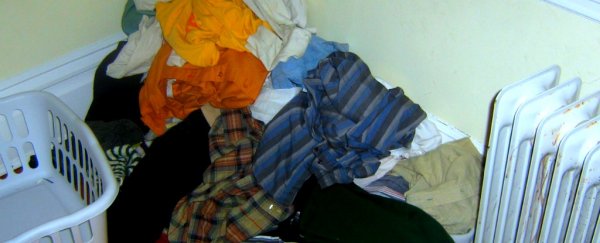Australian researchers have found a way to make clothes wash themselves. The self-cleaning textiles developed at RMIT University in Melbourne only need a spot of sunshine to get rid of those spills and stains.
The method developed is a cheap and efficient way to grow special nanostructures, which can degrade organic matter when exposed to light, directly onto textiles. The work paves the way to nano-enhanced textiles which can clean themselves of grime simply by being put under a light bulb or worn in the sun.
"The advantage of textiles is they already have a 3D structure so they are great at absorbing light, which in turn speeds up the process of degrading organic matter," says Rajesh Ramanathan. "There's more work to do to before we can start throwing out our washing machines, but this advance lays a strong foundation for the future development of fully self-cleaning textiles."
 Cotton textile covered with nanostructures invisible to the naked eye. Magnified 200 times. Image: RMIT University
Cotton textile covered with nanostructures invisible to the naked eye. Magnified 200 times. Image: RMIT University
When the nanostructures are exposed to light, they receive an energy boost, creating hot electrons. These release a burst of energy which enable the nanostructures to degrade organic matter, such as spilled tomato sauce.
The researchers from the Ian Potter NanoBioSensing Facility and NanoBiotechnology Research Lab at RMIT worked with copper and silver-based nanostructures known for their ability to absorb visible light.
The challenge for researchers has been to bring the concept out of the lab by working out how to build these nanostructures on an industrial scale and permanently attach them to textiles.
The RMIT team's novel approach was to grow the nanostructures directly onto the textiles by dipping them into a few solutions, resulting in the development of stable nanostructures within 30 minutes.
When exposed to light, it took less than 6 minutes for some of the enhanced textiles to spontaneously clean themselves.
"Our next step will be to test our nano-enhanced textiles with organic compounds that could be more relevant to consumers, to see how quickly they can handle common stains like tomato sauce or wine," says Ramanathan.
The research is published in the journal Advanced Materials Interfaces.
This article was originally published by Business Insider.
More from Business Insider:
